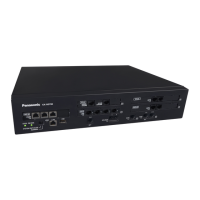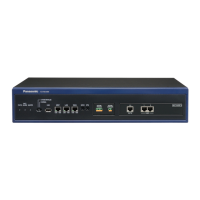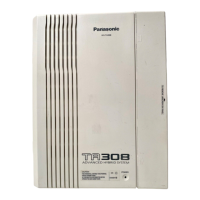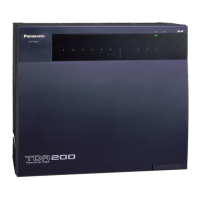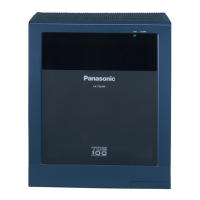4.1.1.1 SIP Server Failover
Description
When communicating with a SIP server (e.g., when the V-SIPGW card is in INS status, when sending periodic
REGISTER requests), if the SIP server does not reply after sending the REGISTER/INVITE request, the
REGISTER/INVITE request is sent again using one of the following methods.
• If a failover SIP server is registered, the REGISTER/INVITE request is sent to that server.
• If a failover SIP server is not registered, a REGISTER/INVITE request is immediately sent to the destination
obtained from a DNS resolution of the registrar server name.
Conditions
• The failover destination is decided based on the following order.
1. The failover destination IP address of the SIP server/Registrar server
2. DNS SRV record / A record round robin
• If the above failover operation fails, communication is attempted over a public trunk rather than a SIP trunk.
Automatic Rerouting of SIP Trunk Calls to Public Trunks
When a SIP trunk call cannot be completed successfully, the PBX can automatically attempt to make the call
using a public trunk instead. This provides a backup method of making calls in cases when IP network
transmission cannot be completed successfully. For more information, refer to "4.3.2 Voice over Internet
Protocol (VoIP) Network—Automatic Rerouting of VoIP Calls to Public Trunks".
[Example]
PBX-1 PBX-2
Extn.1000
Extn.1011
(012-345-1011)
V-SIPGW V-SIPGW
Dials
"012-345-1011".
IP Network
Telephone Company
(area code: 098)
Telephone Company
(area code: 012)
012-345-1011
Installation Manual References
4.4 Virtual Cards
8.4 SIP Trunks
PC Programming Manual References
9.10 PBX Configuration
—[1-1] Configuration—Slot—Port Property—V-SIPGW—Main—
SIP Server IP
Address for Failover
9.10
PBX Configuration—[1-1] Configuration—Slot—Port Property—V-SIPGW—Register —
Registrar Server
IP Address for Failover
9.10 PBX Configuration
—[1-1] Configuration—Slot—Port Property—V-SIPGW—Option—
Failover
Timer(REGISTER)
378 Feature Guide
4.1.1 SIP (Session Initiation Protocol) Trunk
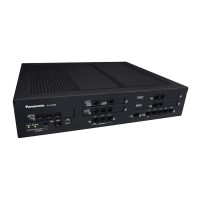
